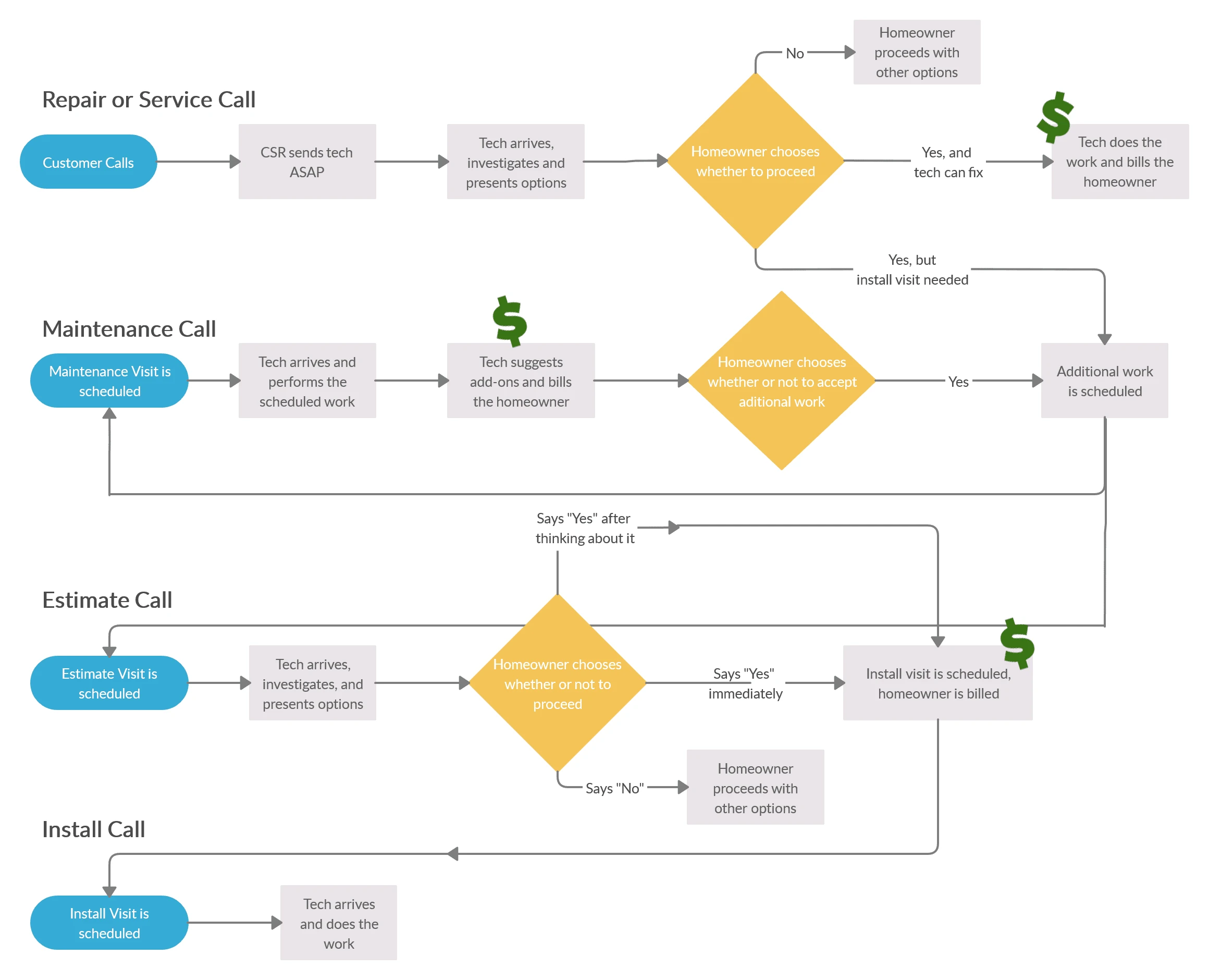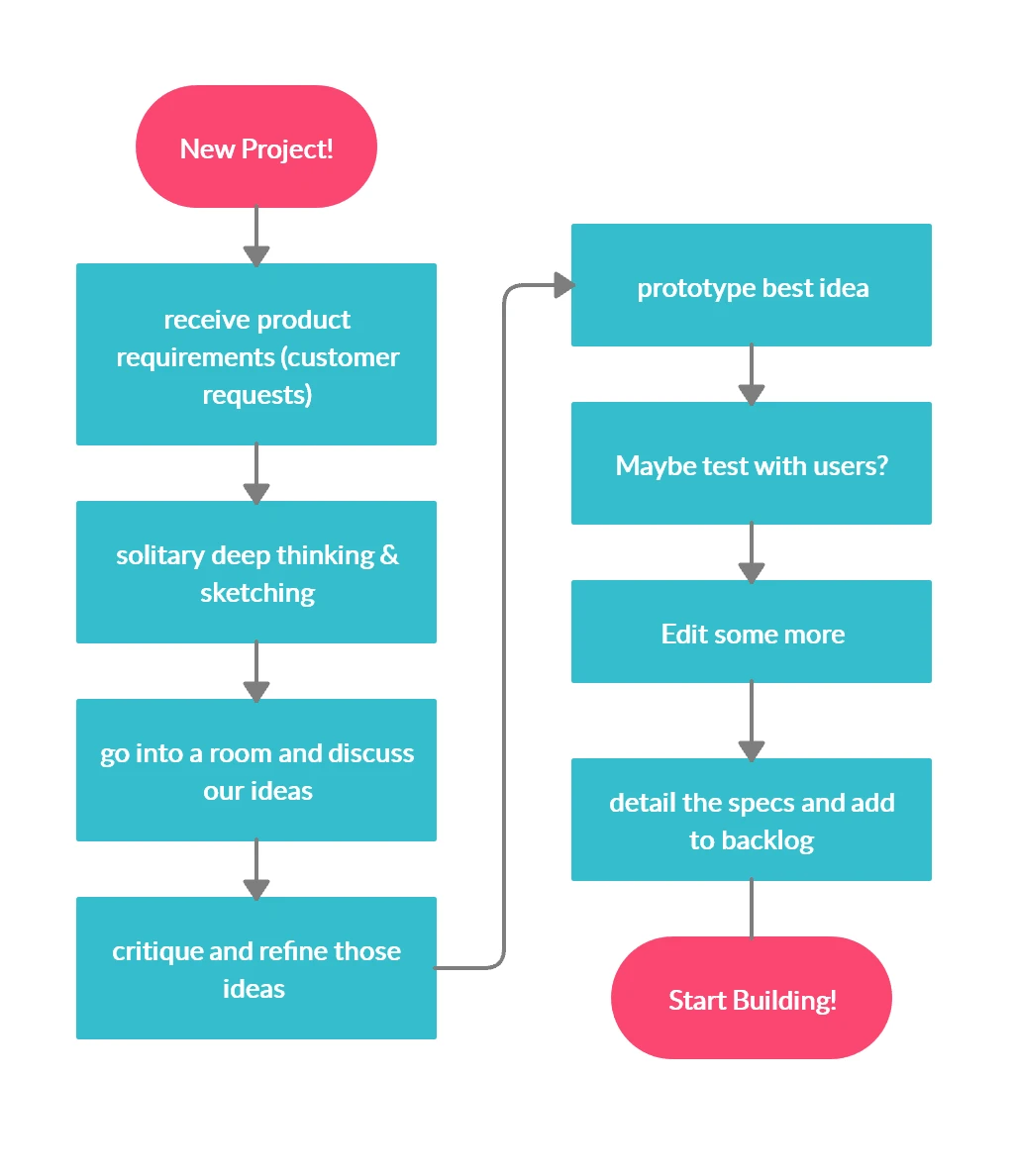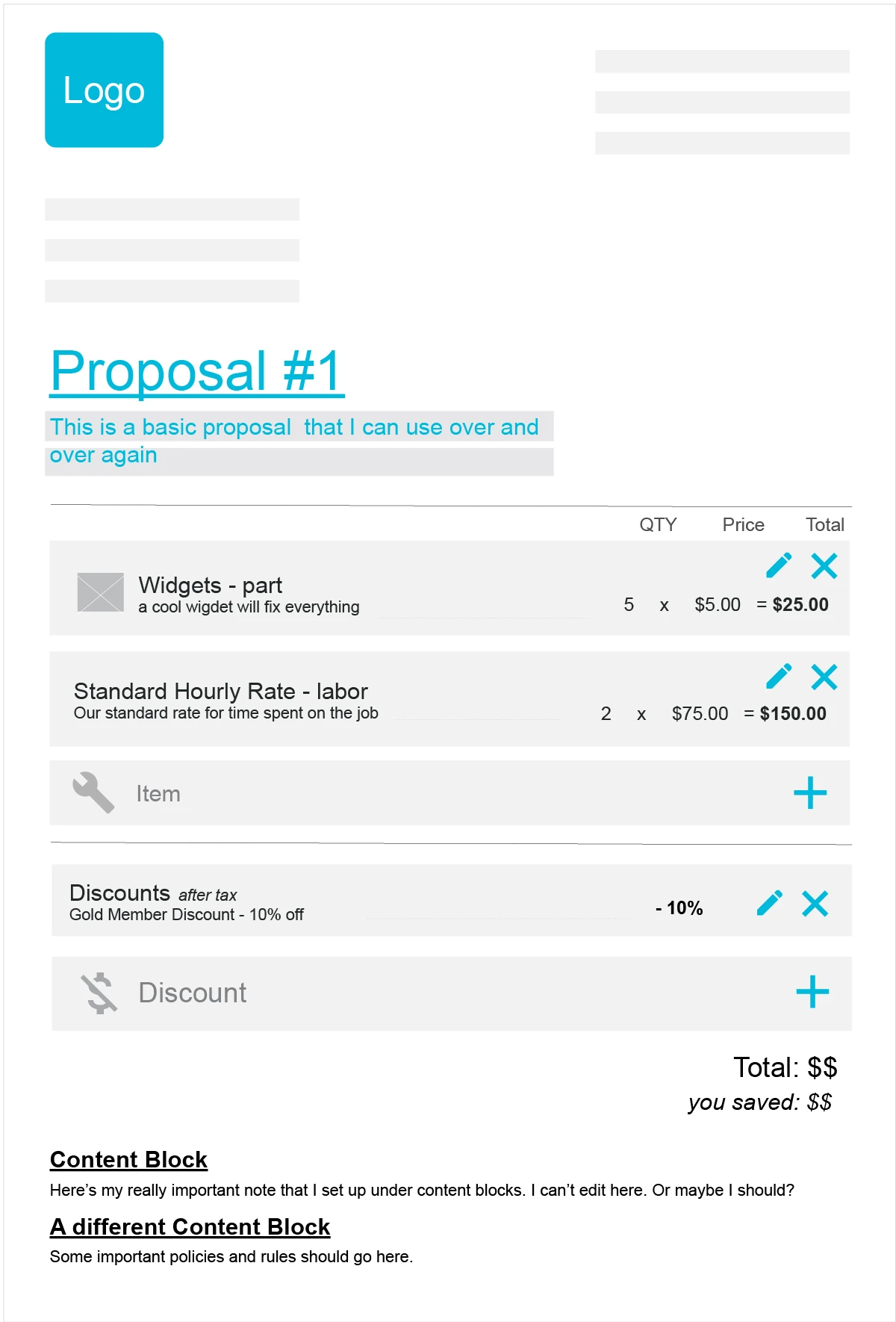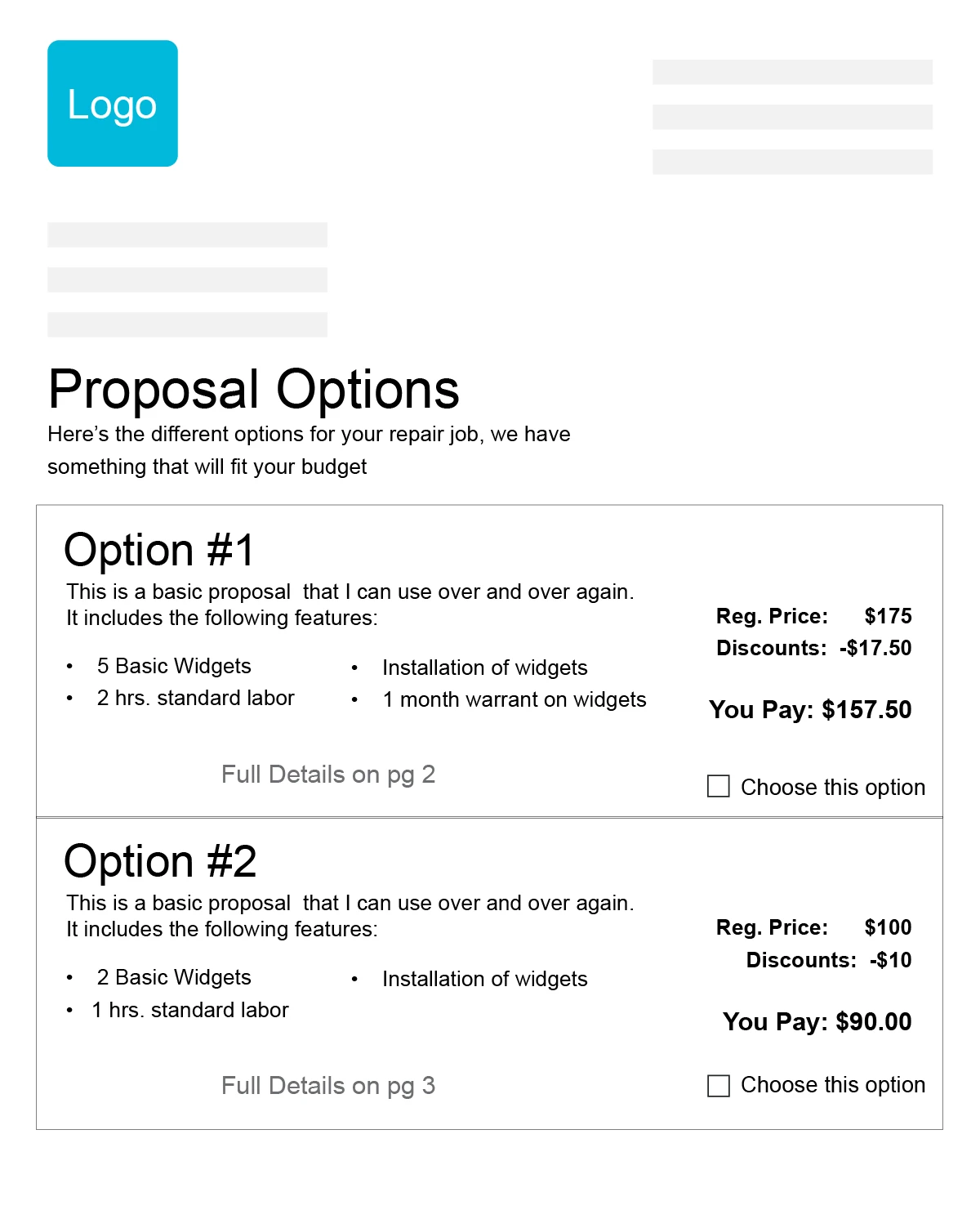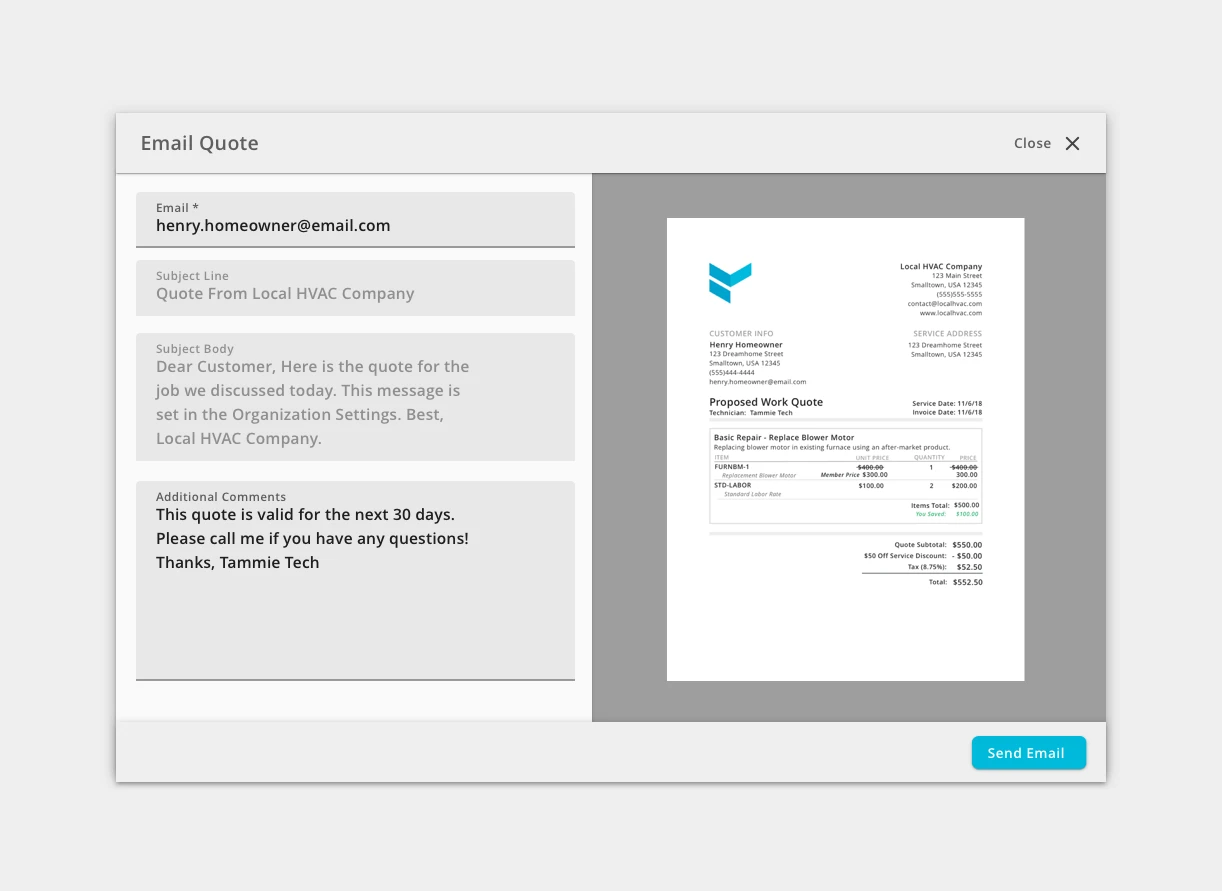
Job Quote & Invoicing System
Addng simplicity to a complex process
Designing a new way for technicians to build customizable invoices & quotes in the field.
- Role
- UX Design
- Timeline:
- ◊ Summer 2018 - Winter 2018
- Team ◊ Pointman
- Designers: Mike Spencer, David Cloyd, Denise Nadal
Product Lead: Steve Raines
Problem
The existing invoicing and quotes system in our app wasn't flexible enough to meet the needs of technicians out in the field. Here are some of the common issues our users experienced:
Issues
- There was no way to copy a quote from one job to another
- If a technician wanted to sell a homeowner a previously offered quote while in the field, you would have to remake the quote or call the office to complete the paperwork.
- If you were selling a standard flat fee service, you would still have to go through the quote → authorized → invoice → approved process, even just for a dispatch fee.
- Our system couldn't show discounts on quotes. So the homeowner would have to trust the technician that the price will be lower than what the paper shows.
Process
This was one of the first major projects I was a part of at Pointman. At this time, we didn't have a discreet Product or UX team. We had a product owner who worked with our SME's to collect requirements, and he deeply collaborated with us on the Engineering team to design and develop the features.
At the time, none of us really understood how to apply innovative Design Thinking methodologies to the app development process. Our process was essentially "start with a customer request, and then iterate, iterate and iterate."
If I had the chance to do this project over again— I would have performed a task analysis, a customer journey map, and mapped out all of our customer feedback in an affinity diagram. After performing this research, I would have our team do several rapid iterations of radically different ideas and test them with users, rather than slowly building up one or two ideas.
Research & Insights
We started this project by getting a list of requests from our Customer Success team, who collected user feedback. Our subject matter experts spend some time walking us through how they believed the users completed this task and how they should do it.
I also performed competitive analysis by looking at how competing products, such as ServiceTitan, Housecall Pro and Jobber handled these issues.
Key Insights
No easy way to present multiple options for a job
You would have to create multiple quotes to present individually. This was also unfair to the technicians, because our system would show that they made 3 offers to the homeowner, and 2 were rejected, even though they did in fact close the deal.
Our system treated quotes as a property of a job
Every job must have a quote, and every time you give a person an estimate, you must create a job. This doesn't match real-life user behavior; oftentimes, a salesperson will visit a homeowner, propose some work and the homeowner decline the work or need time to think about it. There's no need to have a job until the work has been approved and it's time to send the technicians out to do the work that was sold.
Users needed an easy way to copy quotes between jobs
You might want to offer the same add-ons that another technician suggest the last time they visited the same homeowner. You might be working on an apartment unit, and need to quickly copy over the quote and invoices from one unit to another.
Need for part bundles
Technicians would often add the same "bundle" of parts to a quote. For example, a specific fan needs the same accessories every time you install it. It would speed up their workflow to have an ability to add that "bundle" of parts.
Ideation & Design
Our ideation process started with internalizing the information from our SME's and deep thinking about the problems. From there, we started sketching out ideas.
After several rounds of design and critiques, we had some solid designs that we felt comfortable testing.
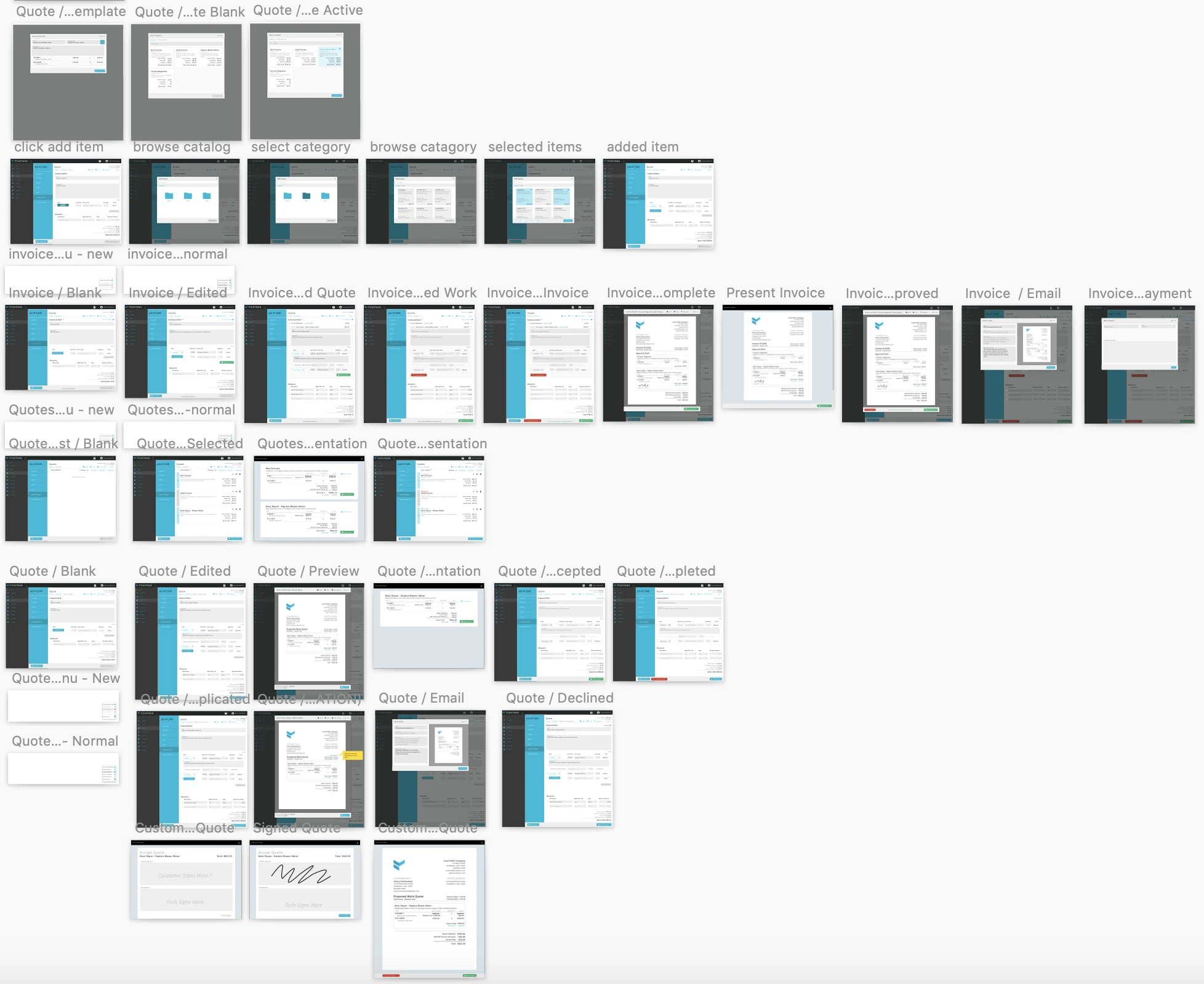
The Final Design
This project was never finished, and below are some of the screens form the last round of designs. The designs follow the scenario of a technician in the field preparing a quote and invoice for a customer.
